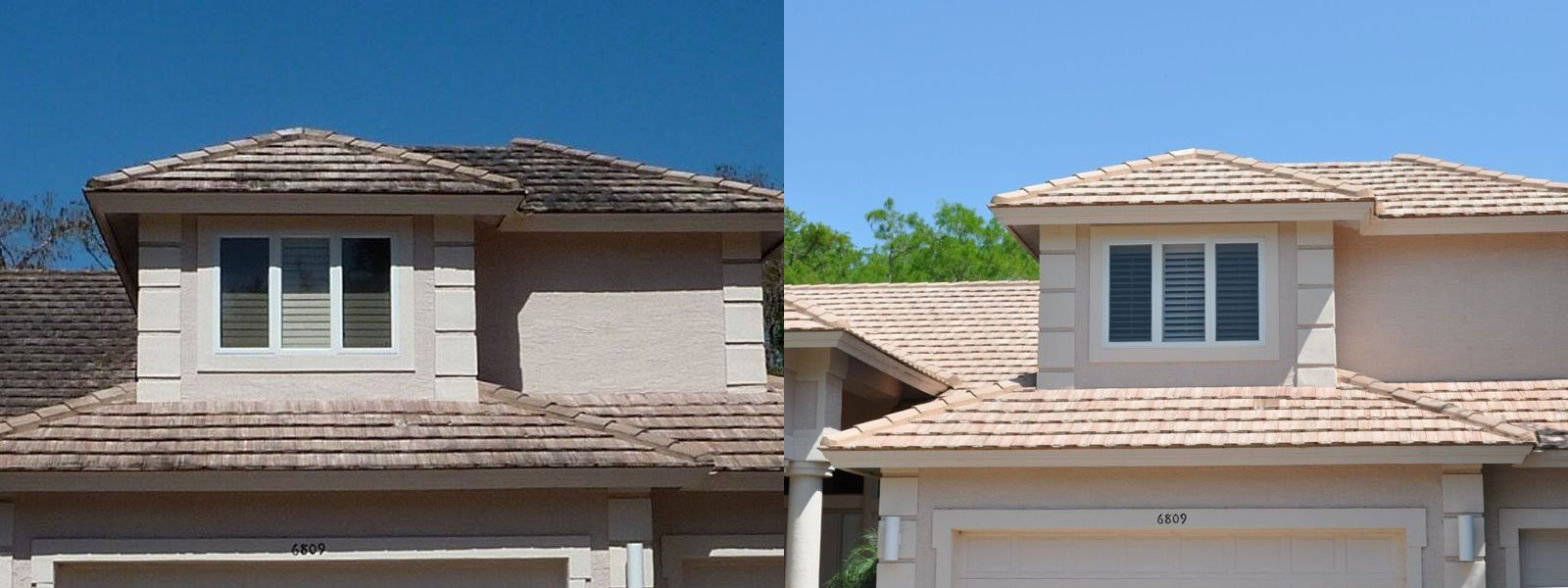The worst impact on a budget is an unexpected event, aka Recovery Event.
A maintenance plan is vital for facility managers to stay on top of regular tasks, such as cleaning, repairs, and equipment inspections. Identifying potential issues before they become significant problems is fundamental to operational success. When creating your facility’s maintenance plan, it’s vital to assess occupational objectives and concoct a plan for exterior upkeep, look at roof hygiene, outdoor space maintenance, sealants, unwanted growths, water damage, window condition, path upkeep, and more.
While the foundation may be the essential part of a building’s initial construction, the ongoing survival of any structure relies almost entirely on the condition and maintenance of the roof. The roof of any facility is exposed to many damaging natural disasters and daily weather conditions, so without regular care, any slight damage or decay can worsen and become an expensive and time-consuming burden to repair. Building managers should implement preventive maintenance protocols to prevent potential issues, such as visual checks after every precipitation event, regardless of light rain or a heavy downpour. Since water is the primary cause of roofing problems, including the introduction of mold spores, examining the building’s drainage system and ensuring that gutters are free of any obstructions are imperative. It is also essential to observe any regions likely to accumulate water and ensure that it is not lingering there for more than a day. Otherwise, the consequences could be dire.
Windows and their maintenance can make or break a maintenance plan regarding energy efficiency and elemental damage. In addition to regularly cleaning the glass, assessing every window’s indoor and outdoor structure is essential. As the seasons change and weather conditions set in, the window’s framework may deteriorate and develop holes in the structure, making it easy for cold air, moisture, and bugs to enter. As mentioned, it is also essential to include a review of the caulking around window frames as part of your facility’s exterior maintenance plan. Make sure to refill any gaps and replace any caulking that has become worn and is no longer effective.
Exterior walls. The walls play the second most important role in the viability of a structure. Cracks, shifting, and unwanted growth can alter the dimensions of the building and set in motion a series of events where doors, windows, and vents lose their integrity and shift. Some of this is external forces, some settling, and some from unwanted roots and mold. Any of these factors impact the construction and must be addressed.
The last element to assess in a regular maintenance plan are walkways. Walkways should provide a safe and secure way for pedestrians to travel from one place to another on your property, but it’s up to the maintenance team to keep these areas up to standard. Employees’ and visitors’ safety is endangered when the pathways’ cracks appear. It is aesthetically displeasing and can make the walkway uneven and unsafe, reflecting poorly on the building manager’s reputation. The entrance walkway is the first personal place of impression for everyone entering a facility. Whether an apartment building, retail store, hotel, school, or place of business, that first impression is essential in how your operation is viewed.
Once the property has been assessed, the next part of an effective maintenance plan is making a list of what spaces will require maintenance & attention. Make sure to consult your maintenance personnel, not just the humans running the numbers, to establish which services should be done regularly, either weekly, monthly, or quarterly. The goal here is to have a maintenance plan that avoids recovery events.
Once you have a daily, weekly, monthly, and yearly idea of your maintenance plan, you need to review the plan for any chances to save money, time, labor, or other resources. Are there tasks better to hire out for rather than rely on the in-house maintenance team? Is there room in the budget for better equipment or chemicals? What products are environmentally friendly, and where are you wasting money on toxic chemicals that will do more harm than good long-term?
Moving from Recovery to Maintenance
An easy way to improve any maintenance plan immediately is to treat your roof, walkways, and building exteriors with Citra-Shield. Any maintenance plan benefits from Citra-Shield because it saves the maintenance team time, money, labor, and water. This is one case where the right thing to do is also the easiest!
Starting at the roof. An annual Citra-Shield application ensures no mold will grow on this susceptible area. Mold on a roof has dire consequences. Mold is insidious, mold will flourish, and mold will find its way into rooftop systems like HVAC, communication, and fire suppression, compromising their sealant integrity and the units themselves.
Exterior Walls are highly vulnerable to mold, algae, and fungus growth. Besides looking horrible, the devious nature of this growth will find its way around windows and doors, eating away at the sealant and compromising their reliability. Hurricane windows are only as reliable as their affixture to the building; entire windows can be blown out, with mold as the culprit.
Sidewalks. Often taken for granted as long as cracks do not exist, this welcome mat to your facility and the first impression is critical to fighting mold entering. Mold spores can be walked into the building and find an environment to grow.
Citra-Shield is a proprietary blend of non-VOC chemicals that remain in solution longer, adhere to surfaces, and penetrate pores. And what is it that makes Citra-Shield genuinely eco-friendly? Well, there’s no citric acid, no bleach, no harsh chemicals, it’s non-caustic, and it’s safe around plants and waterways. The product adheres to a building’s surface, seeps into the material, and kills the root of unwanted organic growth without damaging the building materials.
Citra-Shield is environmentally friendly. Many competitors, if you poured directly down a drain, it would be a violation of most EPA water safety regulations. On the other hand, if you poured Citra-Shield directly down a drain, there’s evidence it could improve the system (anti-fungal, anti-bacterial, non-caustic, etc.). In addition to being good for the environment from a chemical standpoint, Citra-Shield uses less than 5% of the water a pressure washing system requires. This dramatic saving is an essential factor for buildings seeking LEED Certification.
Citra-Shield is a no-rinse solution that works similarly to a biocide without the risks of one. It’s safe and effective for removing stains caused by mold, mildew, algae, moss, and lichen stains from exterior surfaces without using hazardous chemicals or the damaging effects of pressure cleaning. It’s biodegradable, non-corrosive, reduces water use, and eliminates the need to pressure wash. There’s no scrubbing with Citra-Shield; apply the product and watch over time as your buildings reveal their natural gleam. No washing, no scrubbing, non-corrosive, no more stains or mold- once applied, Citra-Shield digests the organic matter that lives in the pores of your structures’ surfaces and builds a shield to prevent future growths and stains. Below, we’ve given an example of what a maintenance plan using Citra-Shield, looks like. Regular maintenance is the key to a building’s longevity, and Citra-Shield can be your team’s secret weapon in the fight against the elements.
What does Citra-Shield clean? The short answer is any surface that can get wet. A more detailed listing is… Surfaces, Stone, Stucco, Tile, Terracotta, Asphalt, Concrete, Pavers, Brick, Mortar, Vinyl, Plastic, Resin, Fabric, Latex, Wood, Fiberglass, and Metal.
Where do we find these surfaces? Again, the short answer is everywhere that gets wet. Commercial Roofs, Residential Roofs, Gutters, Walls, Doors, Floors, Storage Tanks of all Types, Sidewalks, Siding, Pool Decks, Patio Furniture, Boats, Signs, Trailers, Canopy, Entrances, Docks, and Monuments. Did we miss any? If you have an application not listed, please reach out.
Our neutral formula is used in house at Disney, Busch Gardens, VA Centers, Universities, Parks, Storage Tanks, Farms, Restoration Businesses, Municipalities, 10,000s of HOAs Homes, Water Parks, Stadiums, and Convention Centers; see more here Clients – Citrashield
Per Year:
-Apply Citra-Shield to roof, sidewalks, gutters, parking structures, and outside of buildings
By going through basic steps of preparation and upkeep on the outside of your building, you can ensure that it stays safe and attractive to all who enter for years to come. If you don’t already have a plan for exterior upkeep, now is the perfect time to devise one and continue improving.




